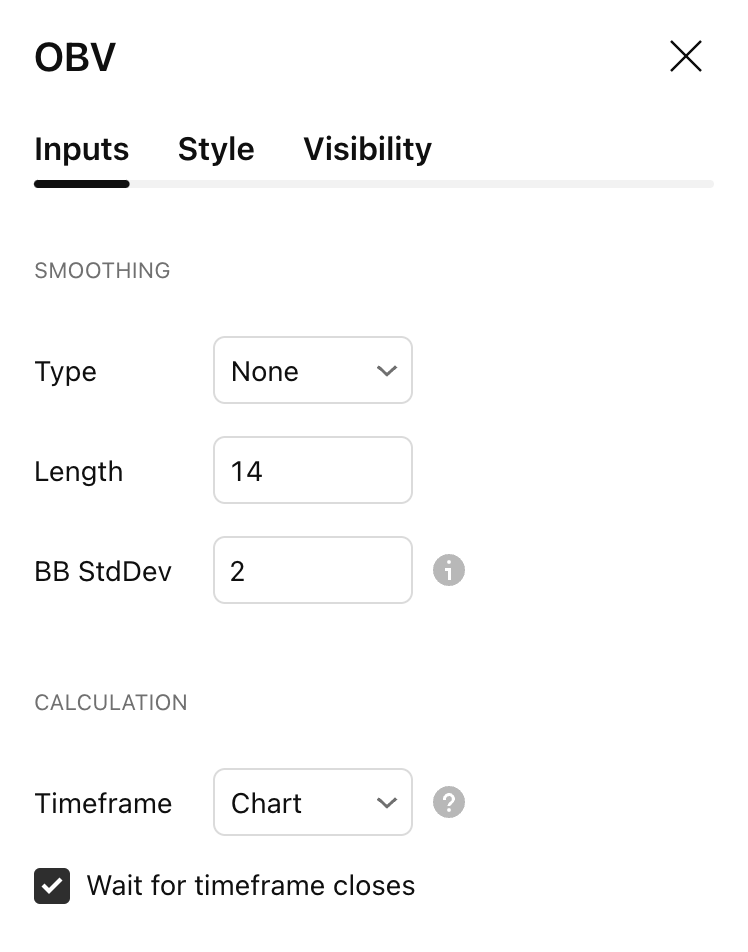On Balance Volume (OBV)
Definition
The On Balance Volume indicator (OBV) is used in technical analysis to measure buying and selling pressure. It is a cumulative indicator meaning that on days where price went up, that day's volume is added to the cumulative OBV total. If price went down, then that day's volume is subtracted from the OBV total. The OBV value is then plotted as a line for easy interpretation. On Balance volume is primarily used to confirm or identify overall price trends or to anticipate price movements after divergences.
History
On Balance Volume (OBV) was created by Joe Granville and introduced in his 1963 book Granville's New Key To Stock Market Profits. The indicator is significant in history because it was one of the first known indicators to account for positive and negative volume flow.
Calculation
On Balance Volume has one of the more straightforward calculations in technical analysis. It is simply addition or subtraction based on a few conditions.
1. If Current Closing Price is greater than the Prior Closing Price then:
Previous OBV + Current Volume = Current OBV2. If Current Closing Price is less than the Prior Closing Price then:
Previous OBV - Current Volume = Current OBV3. If Current Closing Price is equal to the Prior Closing Price then:
Previous OBV = Current OBVThe basics
When volume on up days outpaces volume on down days, then OBV rises. When volume on down days outpaces volume on up days, then OBV falls. What this means is that essentially, when OBV is up, buying pressure is up and when OBV is down, then selling pressure is up. The basic theory behind the On Balance Volume indicator is that volume precedes price. This is significant because it allows the OBV to be used for a couple of different purposes. It can be used for general trend identification or confirmation. It can also be used to anticipate price movement after divergences.
What to look for
Trend Identification
On Balance Volume (OBV) is useful for identifying or confirming overall market trends. This can be helpful for confirming signals or setups generated by additional signals which rely on being able to identify trend in order to be effective. Also, based on the theory that swings in positive or negative volume flow (buying and selling pressure) precede changes in price, OBV can also identify potential trend reversals.
Divergence
Divergence occurs when price movement is not confirmed by the indicator. In many cases, these divergences can indicate a potential reversal. Especially considering the premise behind the OBV indicator which is positive and negative volume swings precede changes in price.
Bullish OBV Divergence occurs when price declines but OBV advances.
Bearish OBV Divergence occurs when price advances but OBV declines.
Summary
The On Balance Volume indicator (OBV) is a good metric for measuring buying and selling pressure. Many people believe that buying and selling pressure precede changes in price, making this indicator valuable. Divergences especially, should always be be noted as a possible reversal in the current trend. As with most indicators however, it is best to use OBV with additional technical analysis tools.
Inputs

Smoothing section
You can learn more about the inputs in the "Smoothing" section in this Help Center article.
Calculation section
You can learn more about the inputs in the "Calculation" section in this Help Center article.